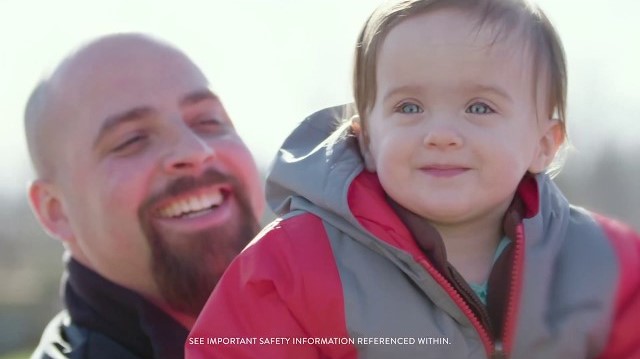INDICATIONS AND USAGE
The AMPLATZER PiccoloTM Occluder is a percutaneous, transcatheter occlusion device intended for the nonsurgical closure of a patent ductus arteriosus (PDA).
CONTRAINDICATIONS
• Weight < 700 grams at time of the procedure
• Age < 3 days at time of procedure
• Coarctation of the aorta
• Left pulmonary artery stenosis
• Cardiac output that is dependent on right to left shunt through the PDA due to pulmonary hypertension
• Intracardiac thrombus that may interfere with the implant procedure
• Active infection requiring treatment at the time of implant
• Patients with a PDA length smaller than 3 mm
• Patients with a PDA diameter that is greater than
4 mm at the narrowest portion
WARNINGS
• This device was sterilized with ethylene oxide and is for single use only. Do not reuse or re-sterilize this device. Attempts to resterilize this device can cause a malfunction, insufficient sterilization, or harm to the patient.
• Do not use the device if the sterile package is open or damaged.
• Use on or before the last day of the expiration month that is printed on the product packaging label.
• Patients who are allergic to nickel can have an allergic reaction to this device.
• Prepare for situations that require the removal of this device. Preparation includes access to a transcatheter snare kit and an on-site surgeon.
• Accurate measurements of the ductus are crucial for correct occluder size selection.
• Do not release the occluder from the delivery wire if either a retention disc protrudes into the pulmonary artery or aorta; or if the position of the occluder is not stable.
• Remove embolized devices. Do not remove
an embolized occluder through intracardiac structures unless the occluder is fully recaptured inside a catheter.
PRECAUTIONS
• This device should be used only by physicians who are trained in standard transcatheter techniques. Determine which patients are candidates for procedures that use this device.
• The physician should exercise clinical judgment in situations that involve the use of anticoagulants and antiplatelet drugs before, during, and/or after the use of this device.
• Patients should have an activated clotting time (ACT) of greater than 200 sec prior to device placement, unless the patient has a significant risk for bleeding and is unable to be anti-coagulated.
• The device may be delivered via an anterograde (venous) or a retrograde (arterial) approach. However, in small infants (≤2 kg), the device should be delivered using the anterograde (venous) approach since small infants are at an increased risk for arterial injury.
• The AMPLATZER PiccoloTM Occluder contains nickel-titanium alloy, which is generally considered safe. However, in vitro testing has demonstrated that nickel is released from this device for a minimum of 60 days following implant. Patients who are allergic to nickel may have an allergic reaction to this device, especially those with a history of metal allergies. Certain allergic reactions can be serious; patients should seek immediate medical attention if there is suspicion of an allergic reaction. Symptoms may include difficulty in breathing or swelling of the face or throat. While data are currently limited, it is possible that some patients may develop an allergy to nickel if this device is implanted.
• Use in specific populations
n Pregnancy — Minimize radiation exposure to the
fetus and the mother.
n Nursing mothers — There has been no quantitative assessment for the presence of leachables in breast milk.
• Store in a dry place.
• Do not use contrast power injection with
delivery catheter.
POTENTIAL ADVERSE EVENTS
Potential adverse events that may occur during or after a procedure placing this device include, but are not limited to:
• Air embolus
• Allergic dye reaction
• Allergic drug reaction
• Anesthesia reactions
• Apnea
• Arrhythmia
• Bacterial endocarditis
• Bleeding
• Cardiac perforation
• Cardiac tamponade
• Chest pain
• Device embolization
• Device erosion
• Death
• Fever
• Headache/migraine
• Hemolysis
• Hematoma
• Hypertension
• Hypotension
• Infection
• Myocardial infarction
• Palpitations
• Partial obstruction of aorta
• Partial obstruction of pulmonary artery • Pericardial effusion
• Pericarditis
• Peripheral embolism
• Pleural effusion
• Pulmonary embolism
• Re-intervention for device removal
• Respiratory distress
• Stroke
• Thrombus
• Transient ischemic attack
• Valvular regurgitation
• Vascular access site injury
• Vascular occlusion
• Vessel perforation







FOLLOW ABBOTT